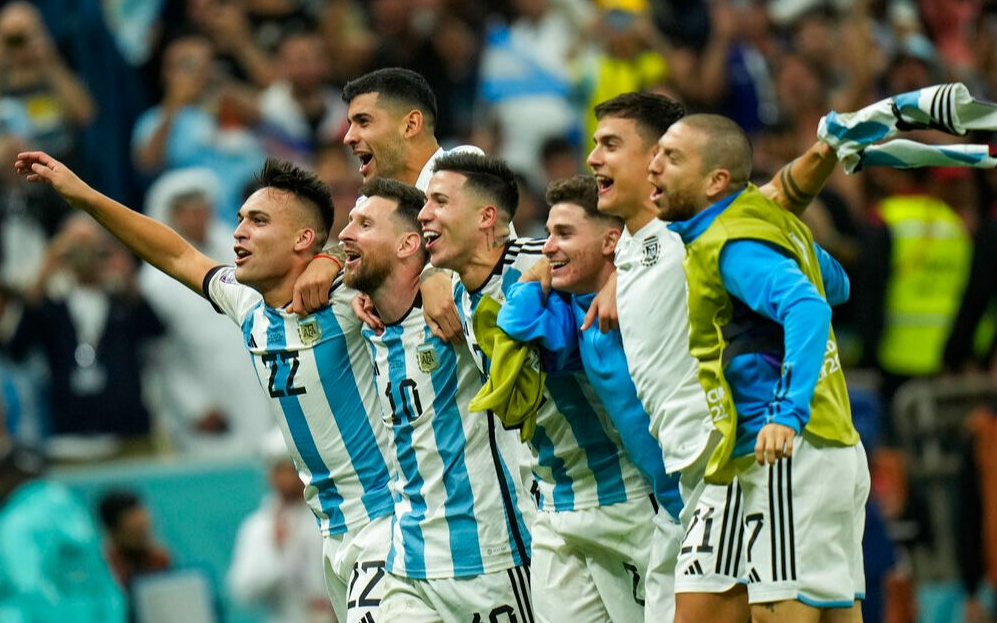
1962 World Cup in Chile
The poster for the 1962 World Cup in Chile was designed by designer Gabarino Ponce. The style of this poster is completely different from the previous ones, full of simple style. Two spheres collide, with the football on the right and the earth on the left. To understand the design, it is necessary to look back to history. Two years before the current World Cup, Chile suffered a major geological disaster - an earthquake that killed more than 5,000 people. Therefore, the poster design of this time mainly highlights two points: First, the World Cup will shake Chile and shake the world; Second, the main body of blue symbolizes hope and renewal.
The ball used in the 1962 World Cup in Chile was called Crack, and its all-white exterior (pictured above with a black-and-white camera) and exaggerated lettering were striking.
1966 World Cup in England
The poster design of this World Cup is not complicated, but it is very memorable. Because this poster incorporates the first mascot in the history of the World Cup. The lion, a symbol of England, shoots hard to add some light interest. The little lion has a smile on his face, is very friendly, and also symbolizes the gentleman of the British people. This World Cup left behind the dark horse North Korea, Eusebio sealed God, the goal-line mystery and other classic stories.
The 1966 World Cup in England was played with a ball called the Slazenger Challenge.
1970 World Cup in Mexico
This World Cup is of great significance to the future development of the World Cup. From the seaside design point of view, scattered geometric shapes spell out the shape of the football, and the visual sense is full of three-dimensional. The application of geometric shapes gives a strong sense of technology. The reason for the technological feel is that this World Cup is the first time that satellite signals are broadcast live around the world. It is a great opportunity for global football lovers to understand the World Cup, pay attention to the World Cup, and also guide the development of the follow-up World Cup.
The ball used in the 1970 World Cup in Mexico was called Telstar, a combination of the English words "TV" and "satellite", symbolizing the first live broadcast of satellite television. Because the TVS at that time were all black and white, in order to let the audience see the football, the designer inlaid black pentagons on the original white football, which was a revolutionary design, and the principle of this design is still used today.
1974 FIFA World Cup in Germany
The poster design of this World Cup uses a variety of artistic expression techniques. The rough lines give people a sense of strength and speed, and the action of volley is particularly powerful, highlighting the rigorous and meticulous style of the German people and the importance of football control skills.
The 1974 FIFA Federal World Cup in Germany was named Chile because two official balls were used at the tournament, one of which was very similar to the Telstar of the previous World Cup. The other "Chile" has reverted to an all-white ball, so named because the design resembles an all-white ball used in the 1962 World Cup in Chile.
1978 Argentina World Cup
The poster design of this World Cup gives a unique visual effect. Each dot and vector color composition of the picture is very unique. It can be seen that the picture of the poster shows the Argentinian players celebrating and cheering when they score a goal, symbolizing Argentina's determination to win the title and the joy of the World Cup event. Hugging each other symbolizes the unity of the tacit understanding of the football spirit, expressing the strength of the team.The name of the ball used at the 1978 World Cup in Argentina was Tango. Tango is the traditional dance of Argentina, the host country, named after the tango football in the design to improve the ball's ability to adapt to various climatic conditions, and to dance as inspiration, the designer connected 20 "triangle Adidas" shaped panels to form 12 equal size circles. The design of football began to be slowly integrated with the national culture.
1982 World Cup in Spain
The poster design of this World Cup is extremely abstract, and the color scheme is bright and bold, showing the enthusiasm of Spanish culture. An abstract cartoon character with a soccer ball in his arms, wearing the uniform of the Spanish national soccer team and smiling warmly and adorably.
The ball used at the 1982 World Cup in Spain was called Tango Espana. The Tango Espana is still leather and has not improved much in design compared to the ball used in the last World Cup, but its revolutionary water-tight sealing joint technology greatly reduces the water absorption of the ball, thus reducing the weight of the ball.

